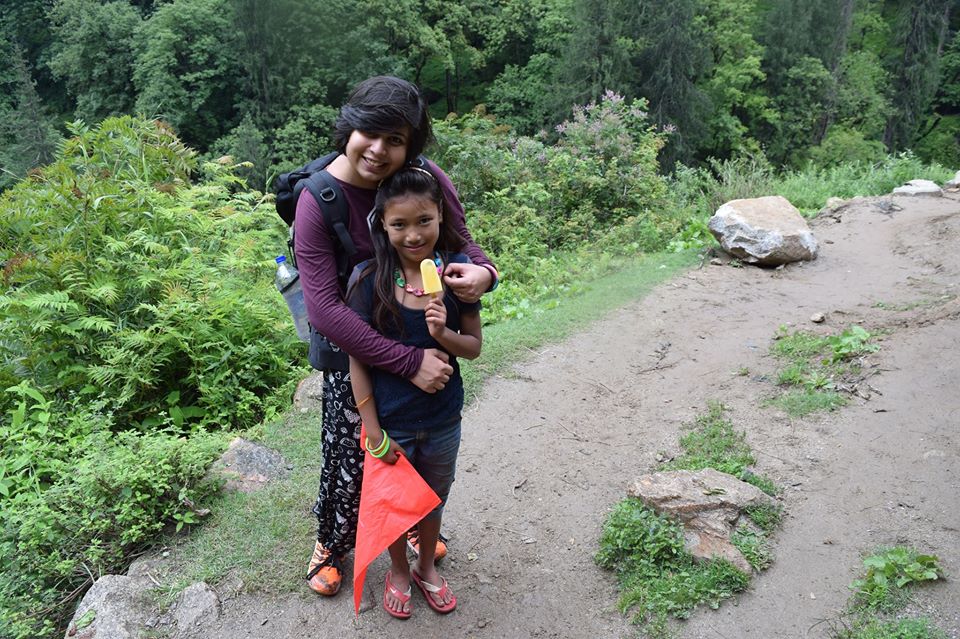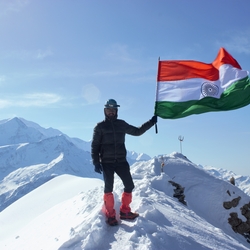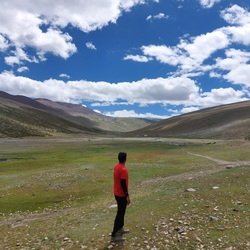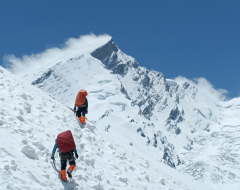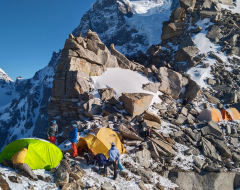Crossing a river stream - Precaution and Tips
Trekking is not just about enjoying nature. It is about many challenges that you face during your time in the wilderness. While these challenges replenish your adrenaline levels, they also teach you how to survive in the wild.
One such challenge is crossing a river stream.
Crossing a river stream on the trek requires more precaution than just folding up your pants. It involves a lot more strategy and technique than you think to obviously not to get yourself drowned in the river.
It is a cakewalk when there is a bridge over the river. But how will you ever cross the stream when there is no bridge?
Register these precautions while crossing a river stream below deep in your memory so that you don’t feel helpless next time you encounter a river stream on the trek and there is no bridge.
1. Scout for the location.
Your first instinct should be to look for a location which has slower water current and is safe to cross the stream from.
Locate the exposed rocks in the river since the water behind the rock is slower than either side of it. It also poses a good resting place in between if the current gets too strong.
Cross from the widest point of the river as the water is shallower than where the river narrows down. Avoid white water parts of the waves and deep rivers with fast currents.
2. Do not cross if the water is deeper than your thighs.
The more body mass you have in the current, the less control you have in water and more are your chances of getting drowned in the river. So, make sure the water does not come over your thighs, and certainly not over your waist.
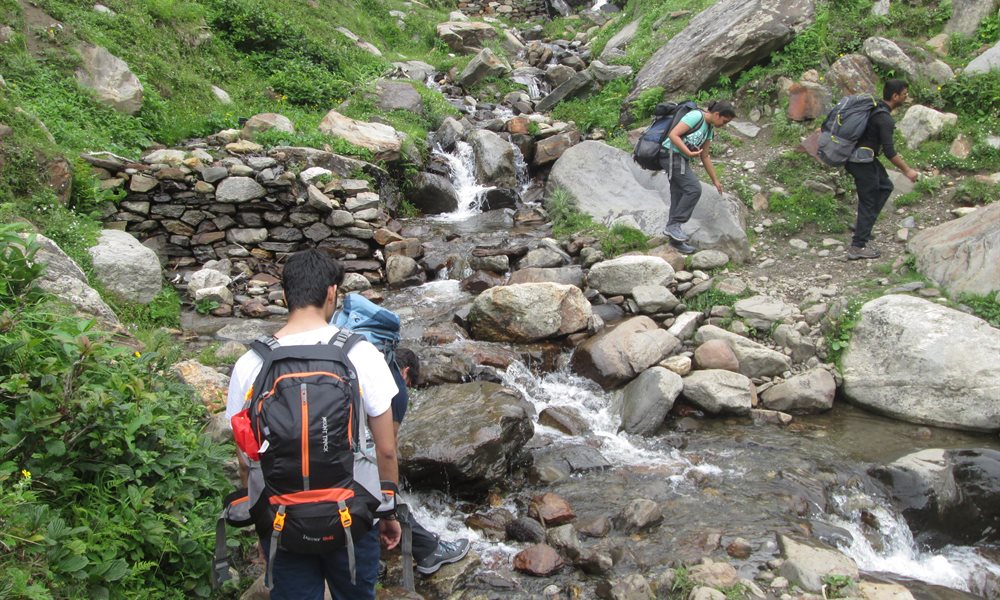
3. Do not remove your boots in the strong current
Removing your shoes before crossing the stream might be an option if the water is very shallow and the stream is mild. However, when the water is more than ankle deep and the current is stronger for you to stand on one leg, then removing the shoe might cause problems.
While crossing the river barefoot, you can damage your feet from poking rocks, submerged logs or branches, and what not under the river. Always ford a river with your boots on your feet since they have traction and protect your foot from underwater hazards.
4. Release your pack
Release the sternum straps and hip belts of your backpack while crossing the river stream. In case you fall in the river, your backpack will fill with water compromising your mobility. You may lose your footing and get washed down with the stream.
While we are at it, make sure you dry proof all your ration and clothes inside the bag to save your stuff from getting wet. It is one of the important precautions while crossing the river stream.
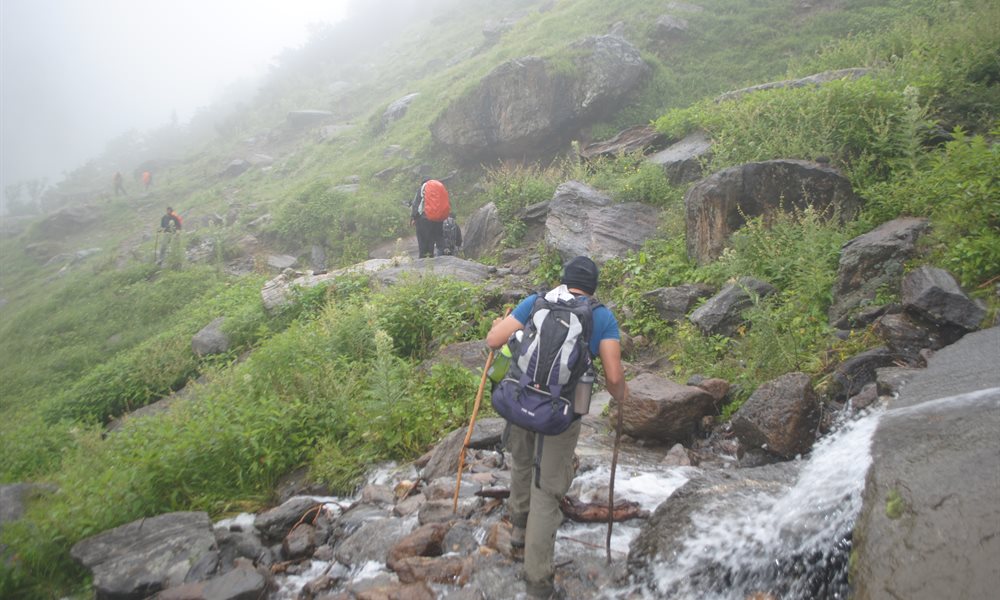
5. Use a trekking pole or a stick
A trekking pole or a shoulder-height stick is best to provide you balance while crossing the river. Form a stable tripod with the pole and your two legs to offer you support and move with two solid points of contact.
Don’t use two trekking poles; tie the other one on your pack so it’s out of the way.
6. Fold the pants
Best bet is to wear convertible trek pants with a zip around the knee to change them into shorts. The long pants soak a lot of water posing difficulties in mobility. Also, they take a longer time to dry. Therefore, it is better to have a convertible or change it into nylon shorts before crossing the stream.
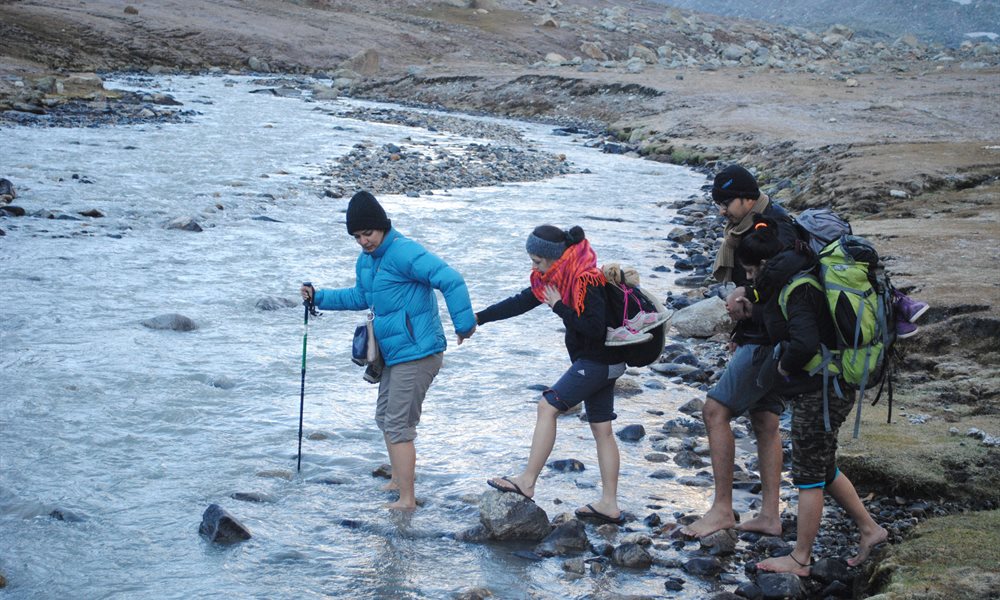
7. Crossing in a group
If the current of the water stream is strong, one of the options you can cross the stream is in a pair or a group. When one person stands behind the other, the upstream person breaks the current making it slower for the people behind.
If crossing as a trio, the most stable way to cross is by forming a triangle.
As a group, form a human chain by crossing arms with each other and have the largest individual at the upstream end to break the current for the group.
Always be careful and cautious at every river crossing. If you ever have the slightest doubt about the stream, walk away and find the best and a safe ford to cross the river. These precautions while crossing a river stream should not be ignored.


